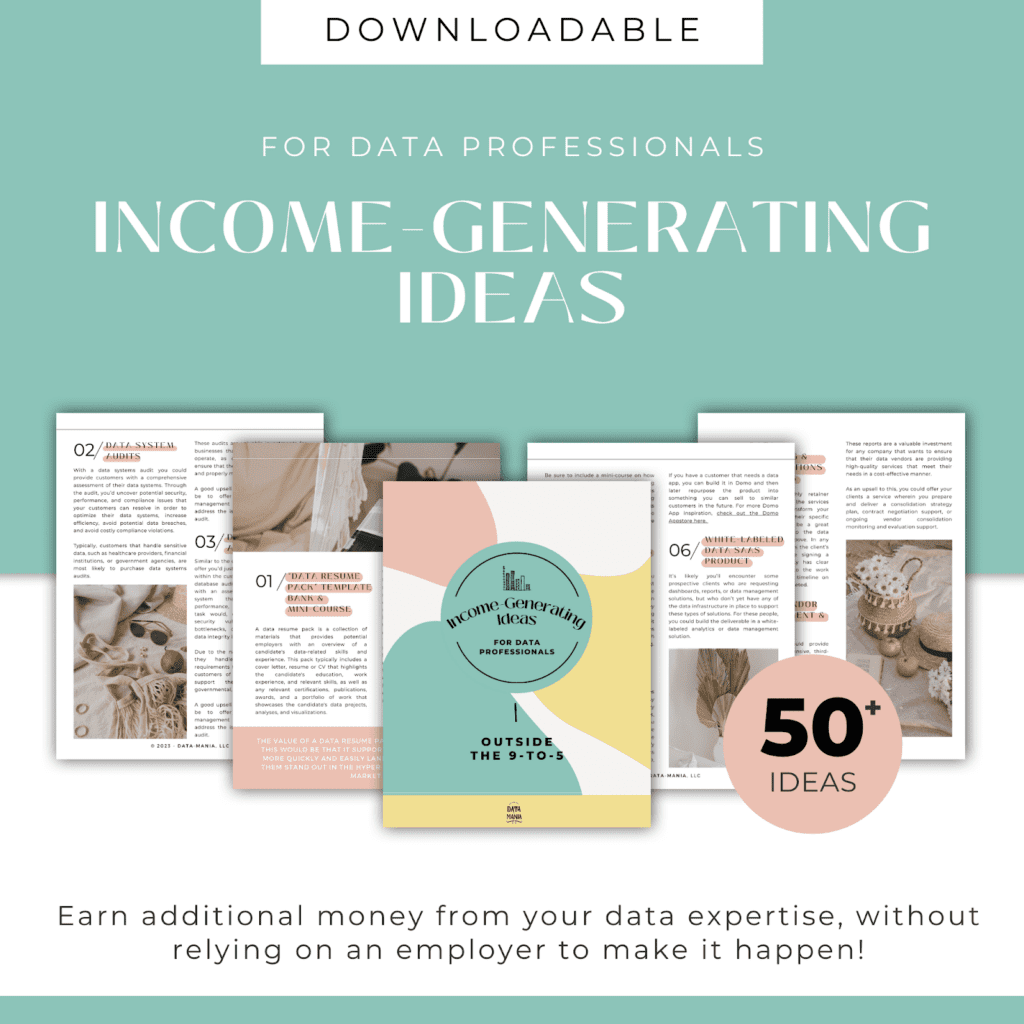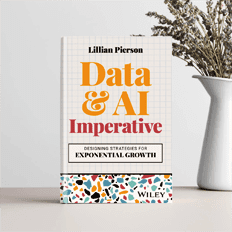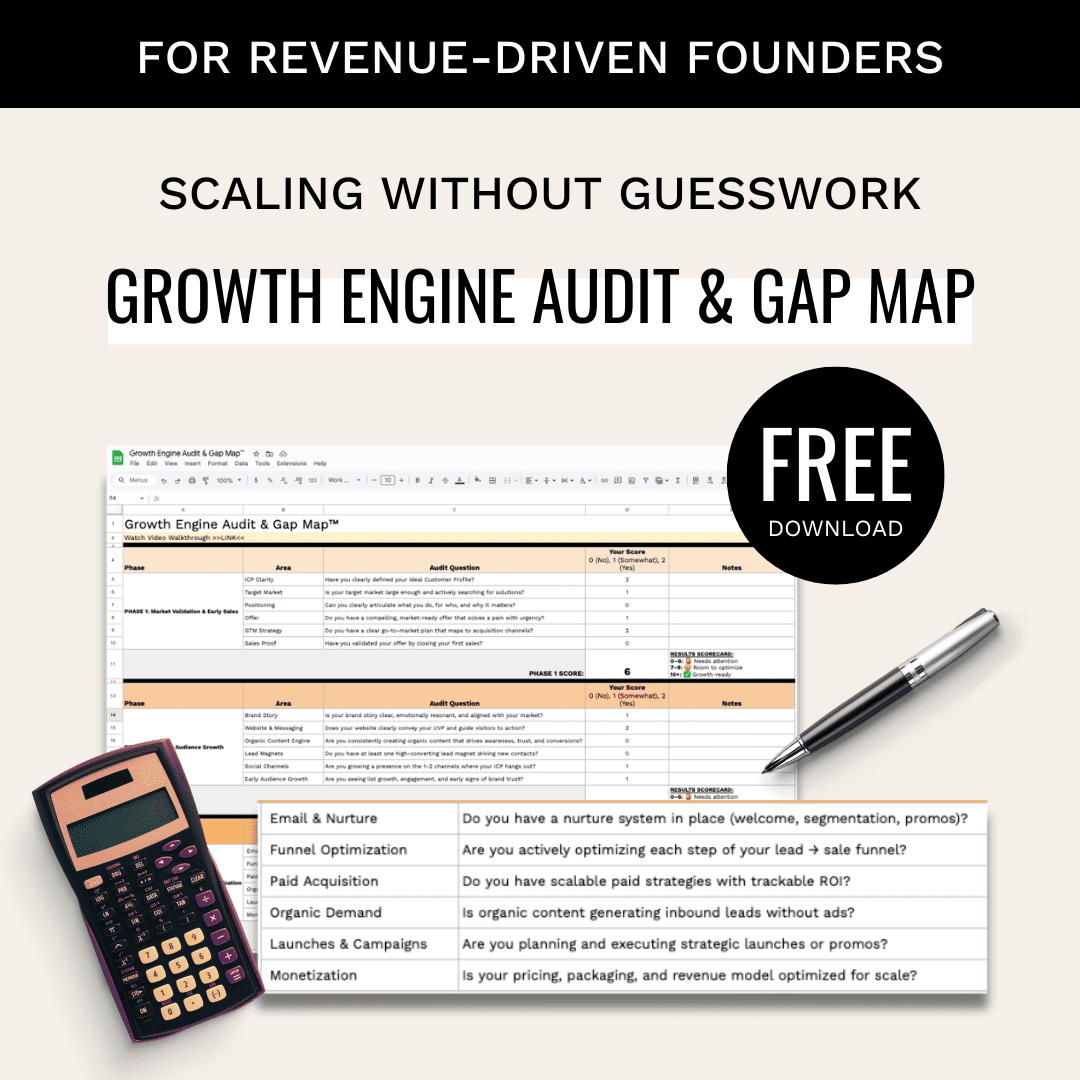Got data? Great! Looking for that perfect data analysis case study to help you get started using it? You’re in the right place.
If you’ve ever struggled to decide what to do next with your data projects, to actually find meaning in the data, or even to decide what kind of data to collect, then KEEP READING…
Deep down, you know what needs to happen. You need to initiate and execute a data strategy that really moves the needle for your organization. One that produces seriously awesome business results.
But how? You’re in the right place to find out.
As a data strategist who has worked with 10 percent of Fortune 100 companies, today I’m sharing with you a case study that demonstrates just how real businesses are making real wins with data analysis.
In the post below, we’ll look at:
- A shining data success story;
- What went on ‘under-the-hood’ to support that successful data project; and
- The exact data technologies used by the vendor, to take this project from pure strategy to pure success
If you prefer to watch this information rather than read it, it’s captured in the video below:
Here’s the url too: https://youtu.be/xMwZObIqvLQ
3 Action Items You Need To Take
To actually use the data analysis case study you’re about to get – you need to take 3 main steps. Those are:
- Reflect upon your organization as it is today (I left you some prompts below – to help you get started)
- Review winning data case collections (starting with the one I’m sharing here) and identify 5 that seem the most promising for your organization given it’s current set-up
- Assess your organization AND those 5 winning case collections. Based on that assessment, select the “QUICK WIN” data use case that offers your organization the most bang for it’s buck
.
Step 1: Reflect Upon Your Organization
Whenever you evaluate data case collections to decide if they’re a good fit for your organization, the first thing you need to do is organize your thoughts with respect to your organization as it is today.
Before moving into the data analysis case study, STOP and ANSWER THE FOLLOWING QUESTIONS – just to remind yourself:
- What is the business vision for our organization?
- What industries do we primarily support?
- What data technologies do we already have up and running, that we could use to generate even more value?
- What team members do we have to support a new data project? And what are their data skillsets like?
- What type of data are we mostly looking to generate value from? Structured? Semi-Structured? Un-structured? Real-time data? Huge data sets? What are our data resources like?
Jot down some notes while you’re here. Then keep them in mind as you read on to find out how one company, Humana, used its data to achieve a 28 percent increase in customer satisfaction. Also include its 63 percent increase in employee engagement! (That’s such a seriously impressive outcome, right?!)
.
Step 2: Review Data Case Studies
Here we are, already at step 2. It’s time for you to start reviewing data analysis case studies (starting with the one I’m sharing below). Identify 5 that seem the most promising for your organization given its current set-up.
Humana’s Automated Data Analysis Case Study
The key thing to note here is that the approach to creating a successful data program varies from industry to industry.
Let’s start with one to demonstrate the kind of value you can glean from these kinds of success stories.
Humana has provided health insurance to Americans for over 50 years. It is a service company focused on fulfilling the needs of its customers. A great deal of Humana’s success as a company rides on customer satisfaction, and the frontline of that battle for customers’ hearts and minds is Humana’s customer service center.
Call centers are hard to get right. A lot of emotions can arise during a customer service call, especially one relating to health and health insurance. Sometimes people are frustrated. At times, they’re upset. Also, there are times the customer service representative becomes aggravated, and the overall tone and progression of the phone call goes downhill. This is of course very bad for customer satisfaction.
Humana wanted to use artificial intelligence to improve customer satisfaction (and thus, customer retention rates & profits per customer).
The Need
Humana wanted to find a way to use artificial intelligence to monitor their phone calls and help their agents do a better job connecting with their customers in order to improve customer satisfaction (and thus, customer retention rates & profits per customer).
The Action
In light of their business need, Humana worked with a company called Cogito, which specializes in voice analytics technology.
Cogito offers a piece of AI technology called Cogito Dialogue. It’s been trained to identify certain conversational cues as a way of helping call center representatives and supervisors stay actively engaged in a call with a customer.
The AI listens to cues like the customer’s voice pitch.
If it’s rising, or if the call representative and the customer talk over each other, then the dialogue tool will send out electronic alerts to the agent during the call.
Humana fed the dialogue tool customer service data from 10,000 calls and allowed it to analyze cues such as keywords, interruptions, and pauses, and these cues were then linked with specific outcomes. For example, if the representative is receiving a particular type of cues, they are likely to get a specific customer satisfaction result.
The Outcome
 Thanks to Humana’s two business use cases, which I outline below, the company enjoyed a 28 percent increase in customer satisfaction and a 63 percent increase in employee engagement.
Thanks to Humana’s two business use cases, which I outline below, the company enjoyed a 28 percent increase in customer satisfaction and a 63 percent increase in employee engagement.
Customers were happier, and customer service representatives were more engaged.
This automated solution for data analysis has now been deployed in 200 Humana call centers and the company plans to roll it out to 100 percent of its centers in the future.
The initiative was so successful, Humana has been able to focus on next steps in its data program. The company now plans to begin predicting the type of calls that are likely to go unresolved, so they can send those calls over to management before they become frustrating to the customer and customer service representative alike.
What does this mean for you and your business?
Well, if you’re looking for new ways to generate value by improving the quantity and quality of the decision support that you’re providing to your customer service personnel, then this may be a perfect example of how you can do so.
Humana’s Business Use Cases
Humana’s data analysis case study includes two key business use cases:
- Analyzing customer sentiment; and
- Suggesting actions to customer service representatives.
Analyzing Customer Sentiment
First things first, before you go ahead and collect data, you need to ask yourself who and what is involved in making things happen within the business.
In the case of Humana, the actors were:
- The health insurance system itself
- The customer, and
- The customer service representative
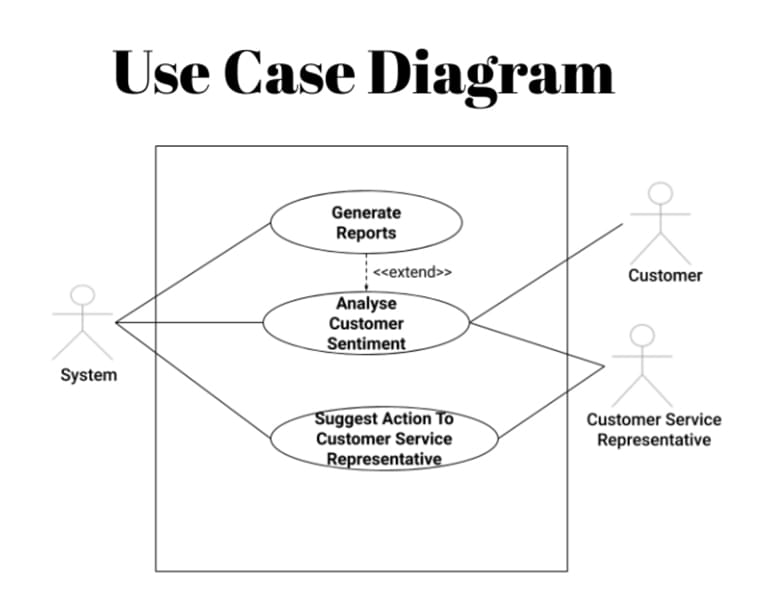
As you can see in the use case diagram above, the relational aspect is pretty simple. You have a customer service representative and a customer. They are both producing audio data, and that audio data is being fed into the system.
Humana focused on collecting the key data points, shown in the image below, from their customer service operations.


By collecting data about speech style, pitch, silence, stress in customers’ voices, length of call, speed of customers’ speech, intonation, articulation, silence, and representatives’ manner of speaking, Humana was able to analyze customer sentiment and introduce techniques for improved customer satisfaction.
Having strategically defined these data points, the Cogito technology was able to generate reports about customer sentiment during the calls.
Suggesting Actions to Customer Service Representatives
The second use case for the Humana data program follows on from the data gathered in the first case.
 Understanding customer sentiment is all very well, but to make your data initiative successful, you need to be willing to take action and make changes based on the information gathered.
Understanding customer sentiment is all very well, but to make your data initiative successful, you need to be willing to take action and make changes based on the information gathered.
In Humana’s case, Cogito generated a host of call analyses and reports about key call issues.
In the second business use case, Cogito was able to suggest actions to customer service representatives, in real-time, to make use of incoming data and help improve customer satisfaction on the spot.
The technology Humana used provided suggestions via text message to the customer service representative, offering the following types of feedback:
- The tone of voice is too tense
- The speed of speaking is high
- The customer representative and customer are speaking at the same time
These alerts allowed the Humana customer service representatives to alter their approach immediately, improving the quality of the interaction and, subsequently, the customer satisfaction.
The preconditions for success in this use case were:
- The call-related data must be collected and stored
- The AI models must be in place to generate analysis on the data points that are recorded during the calls
Evidence of success can subsequently be found in a system that offers real-time suggestions for courses of action that the customer service representative can take to improve customer satisfaction.
Thanks to this data-intensive business use case, Humana was able to increase customer satisfaction, improve customer retention rates, and drive profits per customer.
The Technology That Supports This Data Analysis Case Study
I promised to dip into the tech side of things. This is especially for those of you who are interested in the ins and outs of how projects like this one are actually rolled out.
Here’s a little rundown of the main technologies we discovered when we investigated how Cogito runs in support of its clients like Humana.
- For cloud data management Cogito uses AWS, specifically the Athena product
- For on-premise big data management, the company used Apache HDFS – the distributed file system for storing big data
- They utilize MapReduce, for processing their data
- And Cogito also has traditional systems and relational database management systems such as PostgreSQL
- In terms of analytics and data visualization tools, Cogito makes use of Tableau
- And for its machine learning technology, these use cases required people with knowledge in Python, R, and SQL, as well as deep learning (Cogito uses the PyTorch library and the TensorFlow library)
These data science skill sets support the effective computing, deep learning, and natural language processing applications employed by Humana for this use case.
If you’re looking to hire people to help with your own data initiative, then people with those skills listed above, and with experience in these specific technologies, would be a huge help.
.
Step 3: Select The “Quick Win” Data Use Case
Still there? Great!
 It’s time to close the loop.
It’s time to close the loop.
Remember those notes you took before you reviewed the study? I want you to STOP here and assess. Does this Humana case study seem applicable and promising as a solution, given your organization’s current set-up…
YES ▶ Excellent!
Earmark it and continue exploring other winning data use cases until you’ve identified 5 that seem like great fits for your businesses needs. Evaluate those against your organization’s needs, and select the very best fit to be your “quick win” data use case. Develop your data strategy around that.
NO, Lillian – It’s not applicable. ▶ No problem.
Discard the information and continue exploring the winning data use cases we’ve categorized for you according to business function and industry. Save time by dialing down into the business function you know your business really needs help with now. Identify 5 winning data use cases that seem like great fits for your businesses needs. Evaluate those against your organization’s needs, and select the very best fit to be your “quick win” data use case. Develop your data strategy around that data use case.

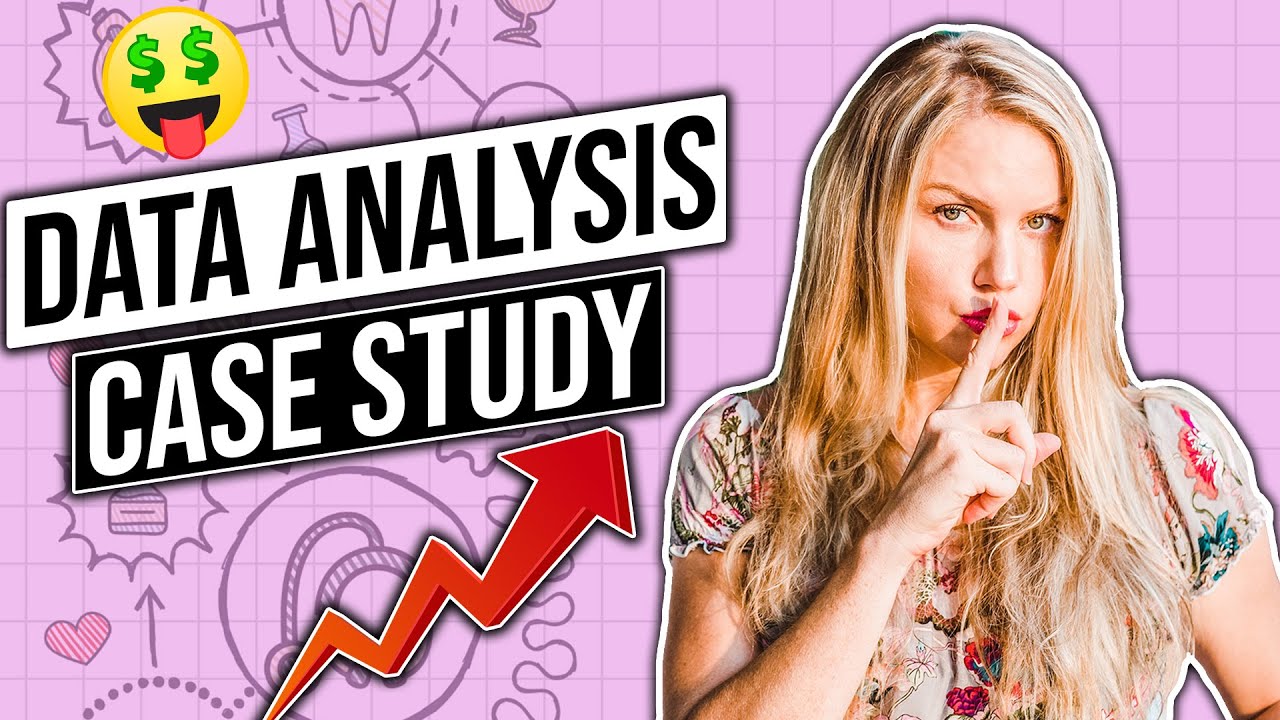
 It’s time to close the loop.
It’s time to close the loop.